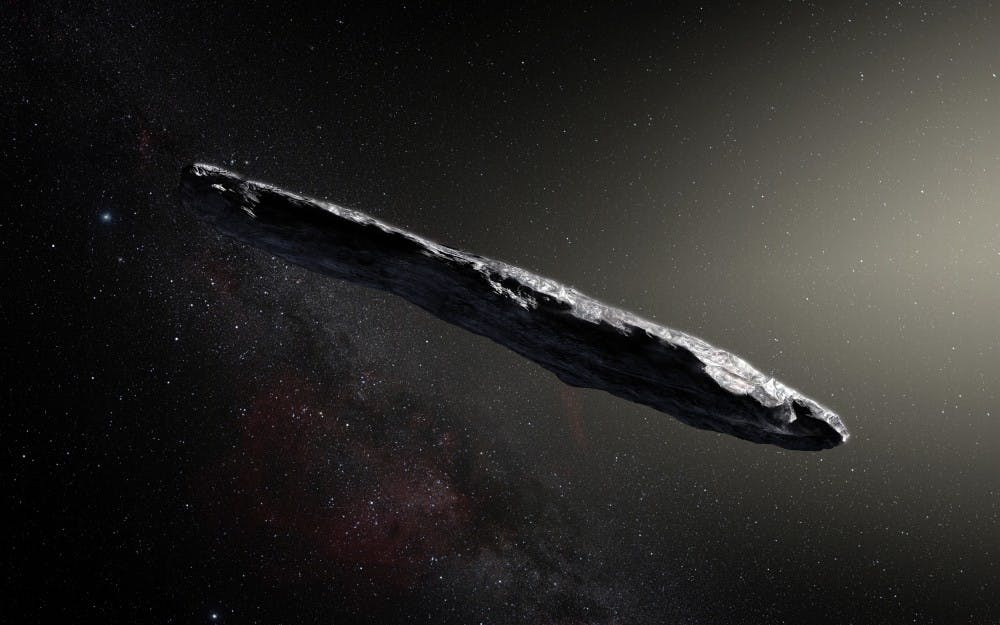On Oct. 19, 2017, scientists in Hawaii spotted a visitor from beyond enter our solar system. Named ‘Oumuamua, it is the first known interstellar asteroid, and it flew in faster than anything astronomers have ever seen. ‘Oumuamua, according to NASA, is a term for “a messenger from afar arriving first.”
‘Oumuamua was spotted by Robert Weryk, a postdoctoral researcher at the University of Hawai’i Institute for Astronomy, using the Pan-STARRS1 telescope.
The Pan-STARRS1 (PS1) telescope, stationed at the Haleakalā Observatory in Maui, is set up to survey the skies 24/7 for change in movement. With its numerous astronomical cameras with approximately 1.4 billion pixels, the PS1 takes four images per hour.
These images are transferred to a database for analysis and allow astronomers to compare the images to each other in order to detect any unusual objects in motion.
At first glance, Weryk thought the fast object was just another typical asteroid. However, upon closer analysis he realized it was something completely different. As Weryk and his colleagues collaborated with other astronomers, ‘Oumuamua was initially thought to be a comet, but as more and more data flooded into the lab, ‘Oumuamua was confirmed to be an asteroid.
Comets and asteroids are very similar in appearance, but they differ in composition which, in turn, influences their location. Asteroids are composed of metal and rocks whereas comets are made up of rocks, ice and dust. Because comets are partially made of ice, approaching the sun would cause the ice to melt, providing it with a “tail.” Asteroids, on the other hand, remain solid when they approach the sun and lack the glowing halo.
Despite their compositional differences, both comets and asteroids have been seen to orbit around our sun. Asteroids orbit closer to the sun in a circular motion, and comets orbit further away from the sun in an elliptical shape.
‘Oumuamua, even though it was characterized as an asteroid, lacked the normal trajectory around the sun and instead followed a hyperbolic trajectory. In fact, through intensive data analysis, astronomers discovered that this asteroid didn’t even come from our solar system; it traveled from the great beyond.
With its red, cigar-shaped 400-meter-long structure, ‘Oumuamua was spotted travelling through interstellar space at 85,700 miles per hour relative to the sun, a speed significantly faster than any other asteroid previously discovered.
So where did it come from? Astronomers believe that ‘Oumuamua, due to its dark nature, potentially contains hydrocarbons indicating a sign of life elsewhere. When our solar system formed, asteroids and comets were thrown around. Therefore, in a similar manner, ‘Oumuamua could potentially be remnants from another solar system forming.
Astronomers believe that ‘Oumuamua could have been wandering through the Milky Way for hundreds of millions of years before reaching our star system.
‘Oumuamua passed Mars’ orbit around Nov. 1 and is predicted to pass Jupiter’s orbit in May 2018. Around January 2019, ‘Oumuamua is predicted to travel beyond Saturn’s orbit and leave our solar system.





